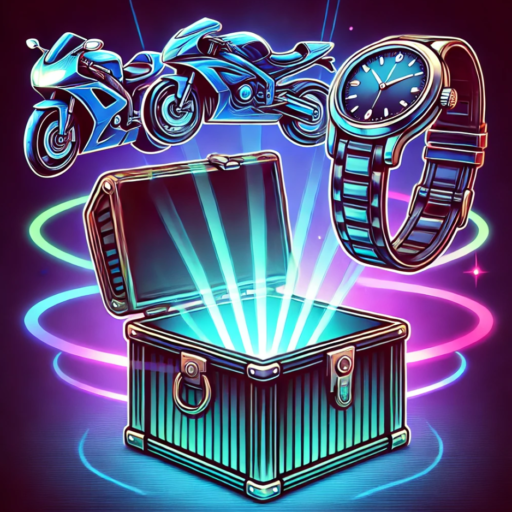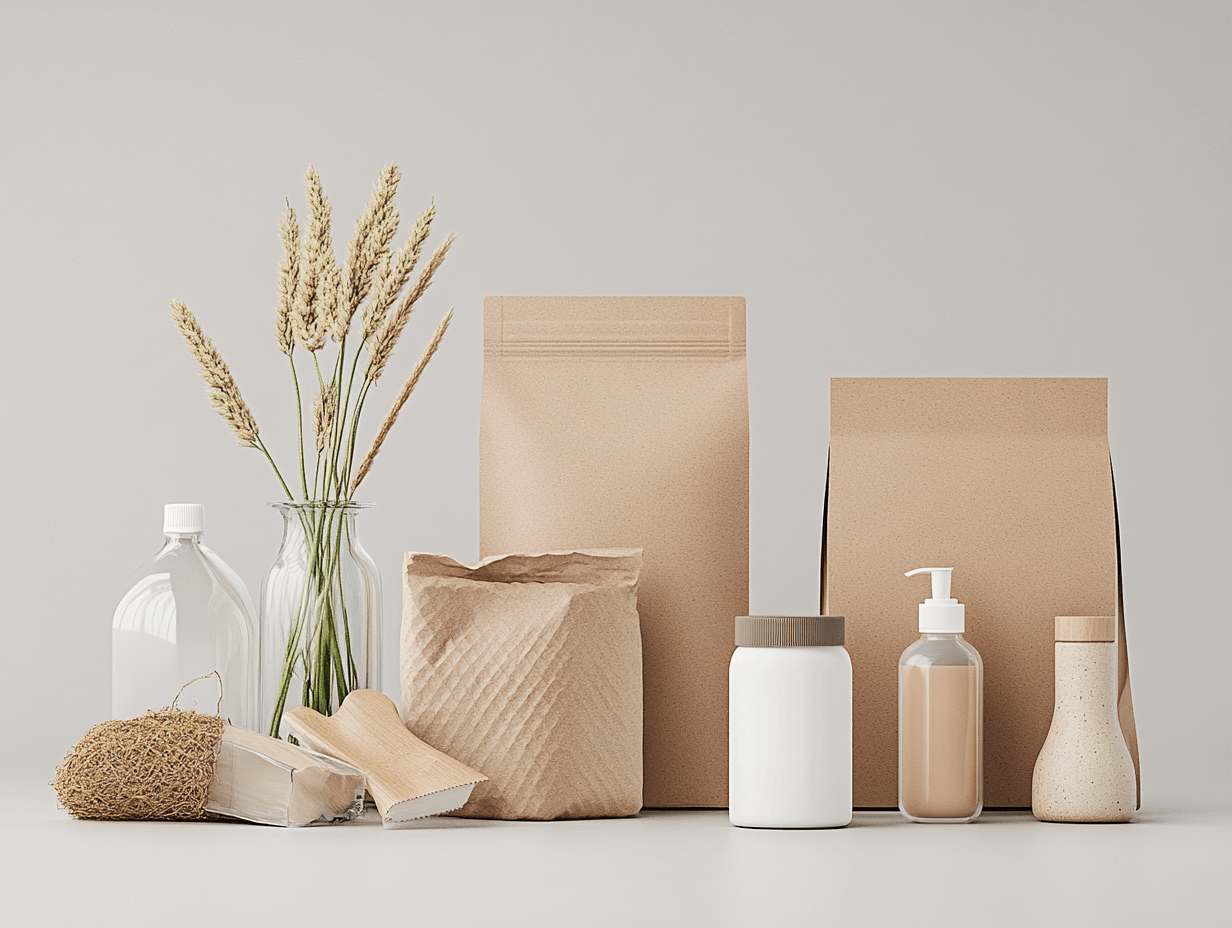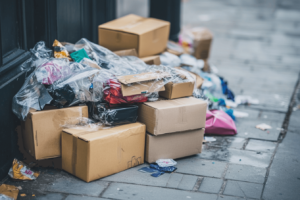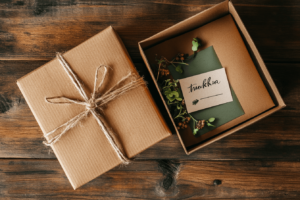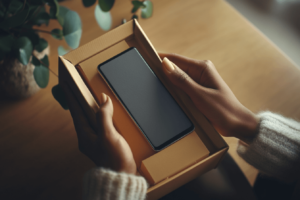The evolution of packaging and experience design
Packaging has come a long way from its humble beginnings as a simple container for products. Today, it serves as an integral part of the customer experience, blending functionality with innovation. The evolution of packaging and experience design is deeply tied to consumer needs, technological advancements, and sustainability efforts. As companies strive to differentiate themselves in a crowded market, packaging has become a vital touchpoint for creating a memorable and meaningful experience for the consumer.
The rise of sustainability
In recent years, sustainability has emerged as one of the driving forces behind the transformation of packaging design. Consumers are becoming increasingly aware of their environmental impact and are seeking brands that align with their values. This shift has led to a surge in eco-friendly packaging solutions. Brands are now prioritizing biodegradable, recyclable, and reusable materials as part of their environmental commitment.
Brands are focusing on using materials that have a minimal environmental footprint. For instance, packaging made from recycled plastics, biodegradable materials, and even paper alternatives is becoming more common. The adoption of circular packaging where materials can be reused or repurposed is one of the key ways companies are helping to reduce waste. Not only does this help conserve natural resources, but it also appeals to a growing segment of environmentally conscious consumers who are willing to pay a premium for sustainable products.
The impact of technology on packaging
Technology has revolutionized the way packaging is designed, manufactured, and experienced. Smart packaging, which incorporates elements such as QR codes, NFC tags, and sensors, is becoming increasingly popular. These technologies allow brands to enhance the consumer experience by offering additional layers of interaction, such as providing product information or tracking delivery in real-time.
One exciting area of innovation is the integration of augmented reality (AR) in packaging. This cutting-edge technology allows consumers to engage with the packaging in an immersive way, adding a layer of excitement and interactivity. Whether it’s through a visual game, a virtual try-on experience, or an enhanced product story, AR is creating new possibilities for brand engagement and customer interaction. As technology continues to advance, we can expect packaging to become even more intelligent and interactive, offering more personalized experiences.
Consumer expectations: shaping the future
The modern consumer is no longer just looking for functional packaging; they want packaging that resonates with them on a personal level. The desire for personalization, sensory experiences, and values-driven choices is reshaping how packaging is designed and how brands engage with their audiences.
Personalization in packaging
Personalization is one of the most significant trends in packaging design today. Consumers want to feel special, and brands are recognizing the value of custom packaging that speaks to individual preferences. Whether it’s limited edition packaging, custom messages, or unique designs tailored to specific consumer segments, brands are finding innovative ways to cater to their audience’s desire for uniqueness.
For example, some brands offer custom-printed packaging where consumers can add their names or create bespoke designs. Personalized packaging not only helps strengthen customer loyalty but also boosts brand recognition. When consumers feel that a brand is making an effort to tailor the packaging experience to them, it creates a sense of connection and emotional engagement.
The sensory experience: more than just visual appeal
Packaging is no longer just about how it looks. Consumers are becoming more attuned to the tactile and sensory aspects of packaging. The texture of the materials, the sound it makes when opened, and even the scent of the product can significantly impact the overall experience.
Designers are paying close attention to the sensory dimensions of packaging. Tactile design elements, such as embossed logos, soft-touch finishes, and unique materials, invite consumers to engage with the product in a more personal way. In addition to touch, scent is also playing a crucial role in the packaging experience. Many brands now incorporate scents into their packaging design to evoke certain emotions or associations with the product.
This multi-sensory approach helps create a more immersive and memorable experience for the consumer, making the product feel more luxurious or unique. By appealing to multiple senses, brands can leave a lasting impression on consumers, fostering greater loyalty and brand recognition.
The role of branding and storytelling in packaging
Packaging has become a powerful tool for brand storytelling. It’s no longer just about the product inside but about the entire experience that packaging can create. Through thoughtful design and messaging, packaging is being used to communicate brand values, tell stories, and create emotional connections with customers.
Crafting memorable brand narratives
Packaging is an extension of a brand’s identity. It’s often the first interaction a consumer has with a product, and it plays a pivotal role in shaping their perception of the brand. As such, many companies are investing heavily in designing packaging that reflects their brand’s values, history, and message.
For instance, some brands use their packaging as a canvas to tell stories about their origins, the people behind the product, or the journey it took to get to the consumer’s hands. This creates an emotional connection, making the experience feel more personal. Packaging that tells a story can also foster a sense of trust and transparency, which is increasingly important to today’s conscious consumers.
Packaging that speaks to the customer’s values
Modern consumers are more informed than ever, and they’re paying close attention to the values that brands embody. Packaging has become a way for companies to communicate their stance on social and environmental issues, as well as their commitment to sustainability and ethical practices. Whether it’s highlighting the use of fair-trade materials, cruelty-free testing, or a company’s efforts to reduce its carbon footprint, packaging can serve as a vessel for important messages that resonate with consumers.
For example, brands that use recycled materials, reduce waste, or make donations to environmental causes are likely to see greater loyalty from consumers who share those values. Packaging that reflects a brand’s commitment to sustainability or social responsibility can drive sales and foster stronger relationships with customers who prioritize these qualities.

Innovations on the horizon: what’s next?
As the packaging industry continues to evolve, new technologies and solutions are pushing the boundaries of what’s possible. From biodegradable packaging to 3D printing, the future of packaging is filled with exciting potential.
Biodegradable and edible packaging solutions
Sustainability is at the forefront of innovation, and one of the most exciting developments in packaging is the rise of biodegradable and edible packaging solutions. Biodegradable materials, such as plant-based plastics and seaweed packaging, are emerging as alternatives to traditional plastic packaging, offering a more eco-friendly option that breaks down naturally in the environment.
Edible packaging, made from ingredients like rice, seaweed, or even chocolate, is also gaining attention. This type of packaging not only reduces waste but also enhances the consumer experience by offering a unique, edible component. While these solutions are still in their early stages, they hold immense potential for reshaping the packaging industry and offering a more sustainable future.
3D printing and custom packaging on demand
The rise of 3D printing technology is poised to revolutionize the way packaging is created. With 3D printing, companies can design and produce custom packaging on demand, eliminating the need for mass production and excess waste. This allows brands to create unique, personalized packaging solutions for individual customers or specific product lines, reducing inventory and waste.
As the technology improves and becomes more accessible, 3D printing will enable brands to experiment with more complex designs and materials, further enhancing the customization of packaging. The future of packaging is one where innovation, sustainability, and consumer-centricity come together to create experiences that go beyond the product itself.
